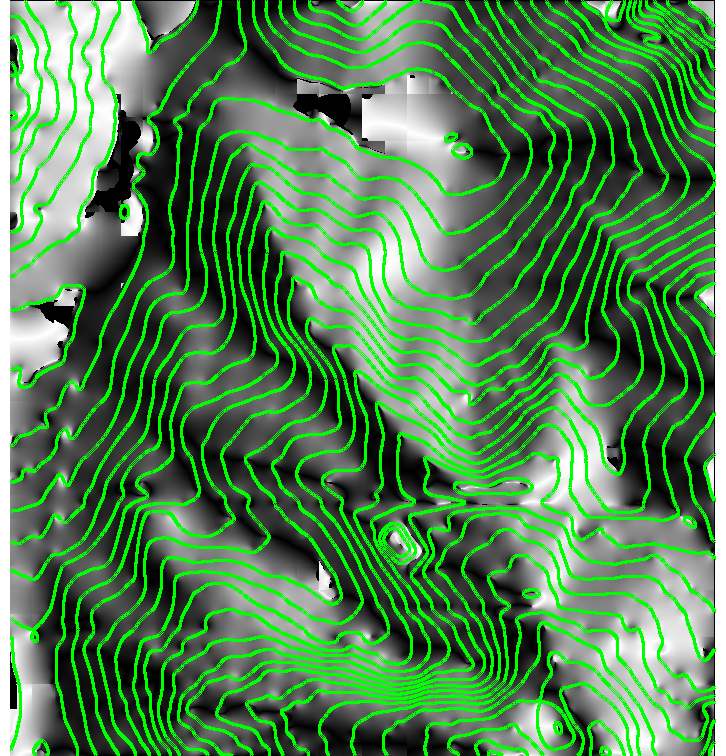
Improving Spatial Interpolation using Google SoC generalization:
Projects
Publications
Mentor:Wolf Bergenheim, Student: Daniel Bundala, Application: Helena Mitasova
Generalization can help to solve some problems when interpolating from oversampled contours by v.surf.rst (as is the case, for example, when they are scanned).
First a test: Even with very small threshold, large number of points is eliminated without noticeable change in the contour geometry
without noticeable change in the contour geometry (from 40,000 to 3,000 points)
result with threshold 5 is more radical.
Each line is generalized independently so eventually contours will cross, so small threshold is what we want to use
(animation from threshold of 0.5 to 12).
Interpolation from given data (40,000 pts) using default parameters (note that the points along contours are practically continuous, there are visible segments on the top of the hill and the computation runs 8 min)
There are many small segments and the data are not very well distributed within the segments. We can improve the results by tuning dmin, npmin, tension and smoothing as we have done for years, but there is a better solution now.
by running v.generalize first, with small threshold we have fewer than 3000 pointsi
Segments are larger and fewer - computation runs under 1 min and the most important - the results are much better.
Default interpolation with original data (there are visible segments and waves along contours)
default interpolation with generalized data
(no segments and no waves)
Note, I had to set dmax to a large number (1000) - the default value
added 100,000 (!) points right back on the contours.